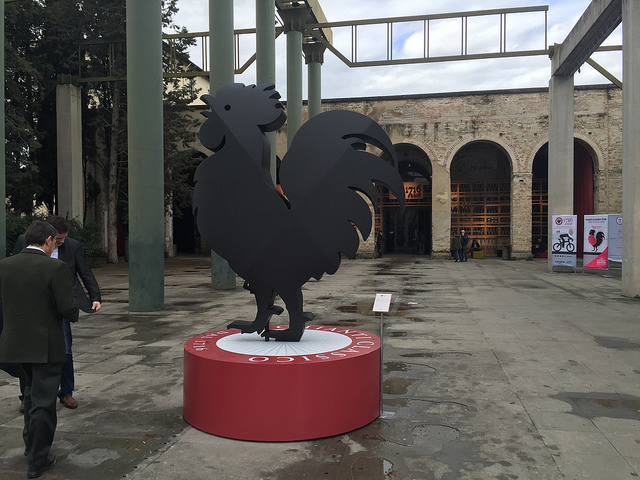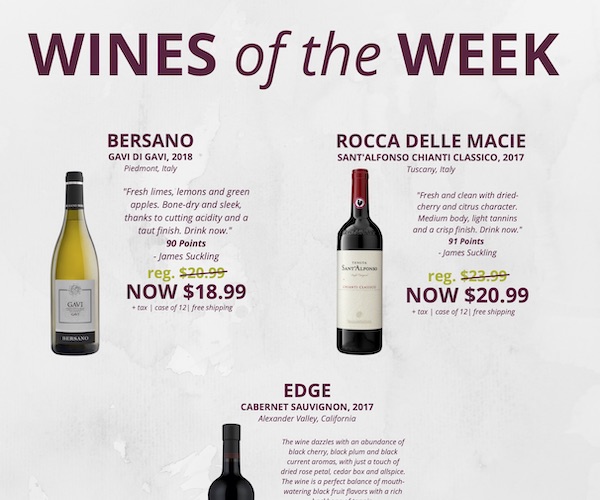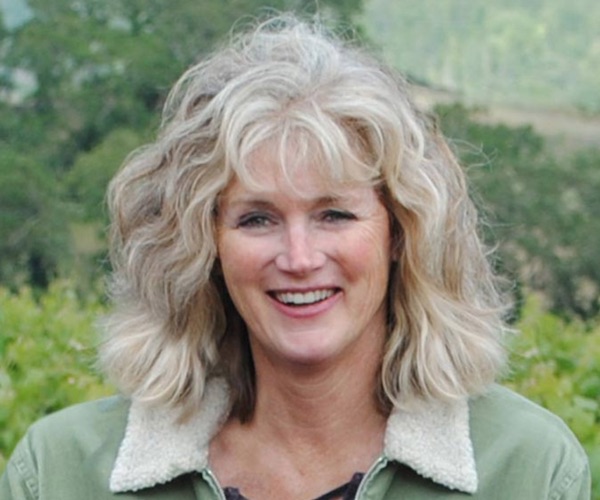
Celebrating the 300th birthday of Chianti Classico at the Stazione Leopolda in Florence with the famed big black cockerel.
Whilst it would surely be churlish to deny the fact that Chianti Classico has come a hell of a long way since the straw-wrapped bottles of yesteryear, is this world famous area at the very heart of Tuscany’s Chianti region still a victim of the antiquated legislation regarding its labelling? Well, yes… and no. And just why is Chianti Classico never mentioned in the same breath as the three Bs of Barolo, Barbaresco, and Brunello these days, when it was once considered by many to be one of the greatest wine regions of the world?
Last month I had the extreme privilege of being invited to attend the 2016 Chianti Classico Collection in Florence as part of this year’s Anteprima Toscana. It also happened to be the 300th birthday of the Classico delimitation, and so this was a seriously big event for all the producers, buyers, sellers, and drinkers of the wines of the region. Over the course of these two days I had the opportunity to taste around 587 wines (plus 47 barrel samples), and I have to tell you that I tried my very best to get through them all, but, as I am sure you’ll understand, that’s a shedload of wine in anyone’s book.
While the overall quality level was undeniably good, many of the wines presented certainly did no favours to further neither the name nor the cause of the DOCG. The strikingly variable 2013 Chianti Classico vintage was not seen as having shone too favourable a light upon all of the vines of the region, and, for me, this was most evident in the glass. And therein lies the problem ; there is basically little to no consistency across these 17,640 acres of vineyards.
Although the local bureaucrats have been busying themselves (bureaucrats are always good at keeping themselves busy ; they love to forever perpetuate the need for their existence), did they really need to create the top tier of Gran Selezione in 2014, when Chianti Classico would have been much better served with the demarcation of official zones and cru? Many of the wines labelled as Gran Selezione would have been made and labelled as Riserva prior to 2014 anyway, the only real differences in the legislation surrounding the labelling being the extended ageing (30 months instead of 24), minimum alcohol is higher (13% compared to 12.5% for Riserva), as well as dry extract, and the fact that no purchased grapes may be used. But there are no regulations regarding where in Chianti Classico the damn grapes come from, just that they all have to come from the same owner, meaning that one of the larger producers with plots all over the region could blend and assemble at will to create their Grand Selection… I guess the secret is in the name, but does this not go against all of the things we celebrate in great Italian wines?
With the 2013 vintage showing that some sites are capable of true greatness whilst others produce nothing more than weak, reedy, mediocre, and sometimes downright nasty juice, surely some establishment of official sub-zones and cru would be the best way forward? Oh yes, I forgot, as is true the world over, politics play quite a substantial role in the stymying of such an endeavour.
All of the Gran Selezione I tasted weighed in at over 14%, and I see this as a problem also. Having a top tier that actively encourages higher alcohol and ripeness is so two centuries ago, especially when we live in a world where the cognoscenti are finally managing to convince the wine-drinking public that less alcohol is in so many ways better than more. I feel that Sangiovese really comes into its own between around 12.5 and 13%, with a little more red fruit apparent. For my palate anyway.
And then there are the blending rules. Whilst today a Chianti Classico must contain a minimum of 80% Sangiovese, that additional 20% of an international varietal can completely dominate, leading to a wine that in no way shows off the distinctiveness possible in the region. The wines could often taste as being from anywhere but Chianti Classico. Well, at least they are no longer obliged to include some of those crappy white varietals, as used to be the case. And a Chianti Classico can now be 100% Sangiovese, as was the case with quite a few of the aforementioned Gran Selezione (usually the ones previously labelled as IGT).
While it is true that today Chianti Classico has a bit of an image problem and that this is a real pity, there are so many wines from the region that successfully express what the soils are capable of, world class wines of incredible finesse and elegance. The better wines were amazingly well-crafted, balanced, and indicative of Chianti’s tremendous potential. It’s just a shame that they are dragged down by so much dross that I would, in many cases, refuse to cook with.
If you are having trouble viewing this video please click here.

Edinburgh-born/Toronto-based Sommelier, consultant, writer, judge, and educator Jamie Drummond is the Director of Programs/Editor of Good Food Revolution… And, for the record, he was most impressed with so many of the wines at this Anteprima.







